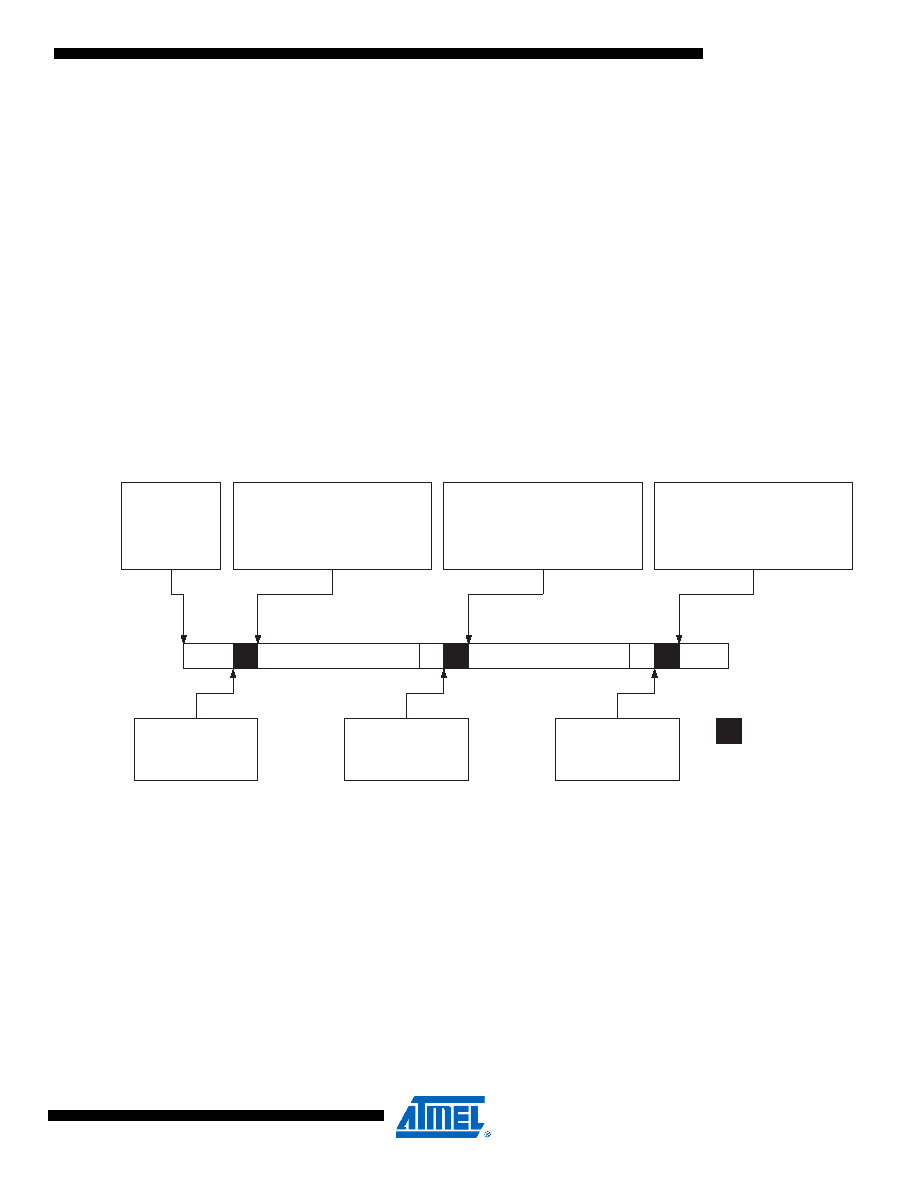- 您現(xiàn)在的位置:買賣IC網(wǎng) > PDF目錄98077 > SATMEGA32A-ANR (ATMEL CORP) 8-BIT, FLASH, 16 MHz, RISC MICROCONTROLLER, PQFP44 PDF資料下載
參數(shù)資料
| 型號: | SATMEGA32A-ANR |
| 廠商: | ATMEL CORP |
| 元件分類: | 微控制器/微處理器 |
| 英文描述: | 8-BIT, FLASH, 16 MHz, RISC MICROCONTROLLER, PQFP44 |
| 封裝: | 10 X 10 MM, 1 MM HEIGHT, 0.80 MM PITCH, GREEN, PLASTIC, MS-026ACB, TQFP-44 |
| 文件頁數(shù): | 96/353頁 |
| 文件大小: | 5149K |
| 代理商: | SATMEGA32A-ANR |
第1頁第2頁第3頁第4頁第5頁第6頁第7頁第8頁第9頁第10頁第11頁第12頁第13頁第14頁第15頁第16頁第17頁第18頁第19頁第20頁第21頁第22頁第23頁第24頁第25頁第26頁第27頁第28頁第29頁第30頁第31頁第32頁第33頁第34頁第35頁第36頁第37頁第38頁第39頁第40頁第41頁第42頁第43頁第44頁第45頁第46頁第47頁第48頁第49頁第50頁第51頁第52頁第53頁第54頁第55頁第56頁第57頁第58頁第59頁第60頁第61頁第62頁第63頁第64頁第65頁第66頁第67頁第68頁第69頁第70頁第71頁第72頁第73頁第74頁第75頁第76頁第77頁第78頁第79頁第80頁第81頁第82頁第83頁第84頁第85頁第86頁第87頁第88頁第89頁第90頁第91頁第92頁第93頁第94頁第95頁當(dāng)前第96頁第97頁第98頁第99頁第100頁第101頁第102頁第103頁第104頁第105頁第106頁第107頁第108頁第109頁第110頁第111頁第112頁第113頁第114頁第115頁第116頁第117頁第118頁第119頁第120頁第121頁第122頁第123頁第124頁第125頁第126頁第127頁第128頁第129頁第130頁第131頁第132頁第133頁第134頁第135頁第136頁第137頁第138頁第139頁第140頁第141頁第142頁第143頁第144頁第145頁第146頁第147頁第148頁第149頁第150頁第151頁第152頁第153頁第154頁第155頁第156頁第157頁第158頁第159頁第160頁第161頁第162頁第163頁第164頁第165頁第166頁第167頁第168頁第169頁第170頁第171頁第172頁第173頁第174頁第175頁第176頁第177頁第178頁第179頁第180頁第181頁第182頁第183頁第184頁第185頁第186頁第187頁第188頁第189頁第190頁第191頁第192頁第193頁第194頁第195頁第196頁第197頁第198頁第199頁第200頁第201頁第202頁第203頁第204頁第205頁第206頁第207頁第208頁第209頁第210頁第211頁第212頁第213頁第214頁第215頁第216頁第217頁第218頁第219頁第220頁第221頁第222頁第223頁第224頁第225頁第226頁第227頁第228頁第229頁第230頁第231頁第232頁第233頁第234頁第235頁第236頁第237頁第238頁第239頁第240頁第241頁第242頁第243頁第244頁第245頁第246頁第247頁第248頁第249頁第250頁第251頁第252頁第253頁第254頁第255頁第256頁第257頁第258頁第259頁第260頁第261頁第262頁第263頁第264頁第265頁第266頁第267頁第268頁第269頁第270頁第271頁第272頁第273頁第274頁第275頁第276頁第277頁第278頁第279頁第280頁第281頁第282頁第283頁第284頁第285頁第286頁第287頁第288頁第289頁第290頁第291頁第292頁第293頁第294頁第295頁第296頁第297頁第298頁第299頁第300頁第301頁第302頁第303頁第304頁第305頁第306頁第307頁第308頁第309頁第310頁第311頁第312頁第313頁第314頁第315頁第316頁第317頁第318頁第319頁第320頁第321頁第322頁第323頁第324頁第325頁第326頁第327頁第328頁第329頁第330頁第331頁第332頁第333頁第334頁第335頁第336頁第337頁第338頁第339頁第340頁第341頁第342頁第343頁第344頁第345頁第346頁第347頁第348頁第349頁第350頁第351頁第352頁第353頁

185
8155C–AVR–02/11
ATmega32A
20.6
Using the TWI
The AVR TWI is byte-oriented and interrupt based. Interrupts are issued after all bus events, like
reception of a byte or transmission of a START condition. Because the TWI is interrupt-based,
the application software is free to carry on other operations during a TWI byte transfer. Note that
the TWI Interrupt Enable (TWIE) bit in TWCR together with the Global Interrupt Enable bit in
SREG allow the application to decide whether or not assertion of the TWINT Flag should gener-
ate an interrupt request. If the TWIE bit is cleared, the application must poll the TWINT Flag in
order to detect actions on the TWI bus.
When the TWINT Flag is asserted, the TWI has finished an operation and awaits application
response. In this case, the TWI Status Register (TWSR) contains a value indicating the current
state of the TWI bus. The application software can then decide how the TWI should behave in
the next TWI bus cycle by manipulating the TWCR and TWDR Registers.
Figure 20-10 is a simple example of how the application can interface to the TWI hardware. In
this example, a master wishes to transmit a single data byte to a slave. This description is quite
abstract, a more detailed explanation follows later in this section. A simple code example imple-
menting the desired behaviour is also presented.
Figure 20-10. Interfacing the Application to the TWI in a Typical Transmission
1.
The first step in a TWI transmission is to transmit a START condition. This is done by
writing a specific value into TWCR, instructing the TWI hardware to transmit a START
condition. Which value to write is described later on. However, it is important that the
TWINT bit is set in the value written. Writing a one to TWINT clears the Flag. The TWI
will not start any operation as long as the TWINT bit in TWCR is set. Immediately after
the application has cleared TWINT, the TWI will initiate transmission of the START
condition.
2.
When the START condition has been transmitted, the TWINT Flag in TWCR is set, and
TWSR is updated with a status code indicating that the START condition has success-
fully been sent.
3.
The application software should now examine the value of TWSR, to make sure that the
START condition was successfully transmitted. If TWSR indicates otherwise, the appli-
cation software might take some special action, like calling an error routine. Assuming
that the status code is as expected, the application must load SLA+W into TWDR.
Remember that TWDR is used both for address and data. After TWDR has been
START
SLA+W
A
Data
A
STOP
1. Application
writes to TWCR
to initiate
transmission of
START
2. TWINT set.
Status code indicates
START condition sent
4. TWINT set.
Status code indicates
SLA+W sent, ACK
received
6. TWINT set.
Status code indicates
data sent, ACK received
5. Check TWSR to see if SLA+W was
sent and ACK received.
Application loads data into TWDR, and
loads appropriate control signals into
TWCR, making sure that TWINT is
written to one
7. Check TWSR to see if data was sent
and ACK received.
Application loads appropriate control
signals to send STOP into TWCR,
making sure that TWINT is written to one
TWI bus
Indicates
TWINT set
Application
Action
TWI
Hardware
Action
3. Check TWSR to see if START was
sendt. Application loads SLA+W into
TWDR, and loads appropriate control
signals into TWCR, making sure that
TWINT is written to one, and TWSTA
is written to zero
相關(guān)PDF資料 |
PDF描述 |
|---|---|
| SAW04A0A | SINGLE COLOR LED, COOL WHITE |
| SAX-XC878-13FFI3V3 | 8-BIT, FLASH, 24 MHz, RISC MICROCONTROLLER, PQFP64 |
| SAX-XC878-13FFI5V | 8-BIT, FLASH, 24 MHz, RISC MICROCONTROLLER, PQFP64 |
| SAX-XC878CM-13FFI5V | 8-BIT, FLASH, 24 MHz, RISC MICROCONTROLLER, PQFP64 |
| SAX-XC878M-16FFI3V3 | 8-BIT, FLASH, 24 MHz, RISC MICROCONTROLLER, PQFP64 |
相關(guān)代理商/技術(shù)參數(shù) |
參數(shù)描述 |
|---|---|
| SAT-MX-10-R | 制造商:3M Electronic Products Division 功能描述:SAT-MX-10-R SLIC STUBBED AERIA 80611319551 制造商:3M Electronic Products Division 功能描述:SLIC STUBBED AERIAL TERMINAL 10 PR UNPROT MX2000 RIGHT ENTRY |
| SAT-MXP-10-L | 制造商:3M Electronic Products Division 功能描述:SLIC STUBBED AERIAL TERMINAL 10 PR MX2000 PROT LEFT ENTRY |
| SATP4032G-CMM | 制造商:PRETEC 功能描述:DRIVESSD 32GB 2.5" SATA IIP4000 MLC |
| SATP4128G-CMM | 制造商:PRETEC 功能描述:DRIVESSD 128GB 2.5" SATA IIP4000 MLC |
| SATP4256G-CMM | 制造商:PRETEC 功能描述:DRIVESSD 256GB 2.5" SATA IIP4000 MLC |
發(fā)布緊急采購,3分鐘左右您將得到回復(fù)。